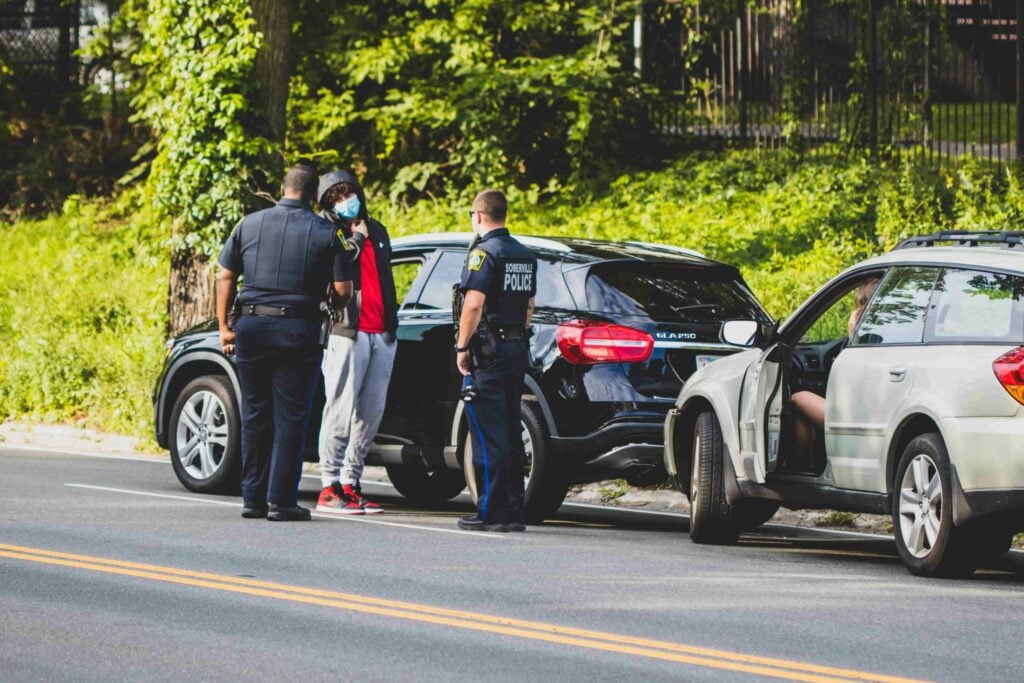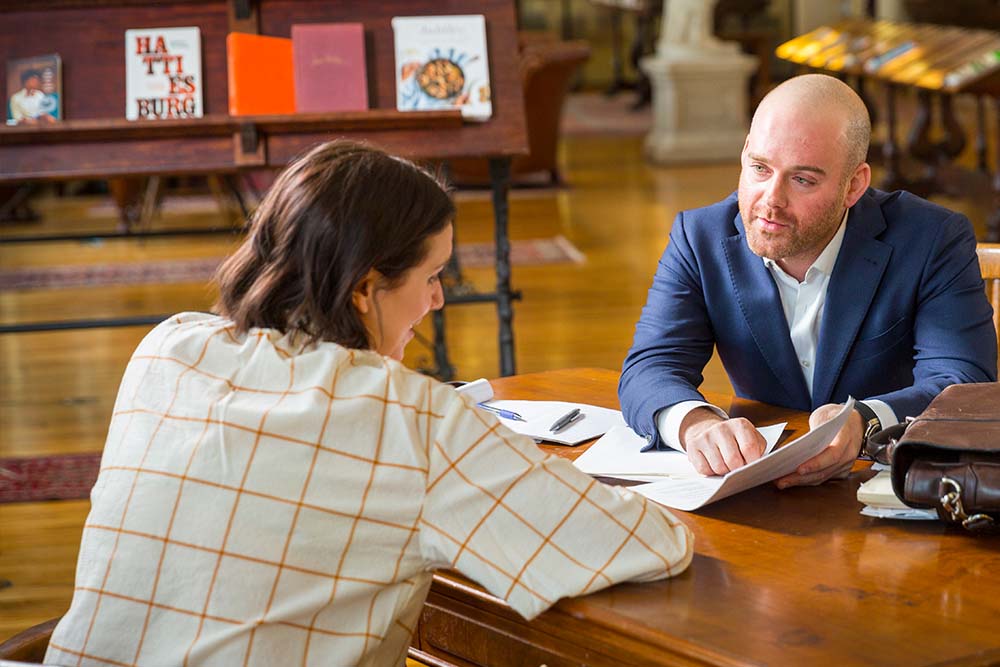If you or a loved one was injured in a bicycle accident, consider contacting an attorney to protect your rights. In this comprehensive guide, we’ll explore the key aspects of Bicycle Safety in Pennsylvania, covering everything from Pennsylvania bike laws to essential safety tips, and what to do in the unfortunate event of a bicycle accident. At GSAS Law, we are dedicated personal injury attorneys who have a great deal of experience with bicycle accident cases. We can help you take the right steps following your accident to avoid being taken advantage of.
Understanding Pennsylvania Bicycle Laws
When it comes to bicycle safety in Pennsylvania, it’s vital to understand the rights and responsibilities granted to cyclists under the state’s Vehicle Code. The code explicitly considers “pedalcycles” as vehicles, affording riders the same rights and responsibilities as drivers of motor vehicles. Certain exceptions apply, and knowing these regulations can help ensure your safety on the road.
Riding on the Roadway
- Shoulder or Roadway Riding: Bicycles may be ridden on the shoulder of the road, following the flow of traffic. However, it’s important to note that riding on the shoulder is not a legal requirement.
- Right Half of the Roadway: In Pennsylvania, cyclists have the option to ride on the right half of the roadway in the following situations:
- On a multilane roadway, you may ride in the right-most travel lane.
- On a two-lane roadway, you have the right to use the right lane.
- On a roadway without a center line, you can ride anywhere on the right side.
- Changing Lanes: Cyclists can move from the right lane under specific conditions, such as when overtaking another vehicle proceeding in the same direction, preparing to make a left turn, or when encountering an obstruction that necessitates a lane change.
Intersections and Traffic Signals
- Treat Traffic Signals with Caution: In cases where traffic signals do not respond to a bicycle waiting for a green light, it is considered “inoperable” under law. You may treat it as a stop condition when red or a caution condition when green or yellow. Always exercise due care.
Overtaking and Distance
- Motor Vehicles Overtaking Bicycles: Motor vehicles must allow a minimum of 4 feet of distance when overtaking a bicycle and travel at a careful and prudent speed. It is the responsibility of motorists to provide this clearance.
- No-Passing Zones: Motor vehicles may overtake a bicycle in a no-passing zone to avoid excessive delays but must do so with due care and while maintaining the required 4 feet of clearance.
Opening Vehicle Doors
- Door Safety: No person shall open any door on a motor vehicle unless it is reasonably safe to do so and does not interfere with traffic flow. Cyclists should maintain a distance of 4 feet between parked vehicles and their line of travel to avoid accidents known as “dooring.”
How to Ride: Lane Control
When riding a bicycle on a roadway alongside larger, faster-moving vehicles, it’s essential to exercise prudence and confidence. As a vehicle, you have the right to use the shoulder or appropriate travel lane and should assert this right by using lane control.
Lane control can significantly reduce the risk of specific crash types, including:
- Right-Hook Crashes: These occur when overtaking motor vehicles fail to complete the maneuver safely before initiating a right turn, colliding with the cyclist traveling straight ahead.
- Dooring: This happens when a motor vehicle occupant opens a door into the path of a cyclist without exercising due care.
- Overtaking Crashes: These result from a driver failing to overtake a bicycle with due care and striking the cyclist from behind.
Equipment and Sidewalk Riding
- Bicycle Equipment: Bicycles used between sunset and sunrise must have a front lamp and rear and side reflectors visible from at least 500 feet. Brakes must be capable of stopping the bike within 15 feet from an initial speed of 15 mph on dry, level pavement. Some municipalities may require a bell or signal device.
- Sidewalks: Pedestrians have the right-of-way on sidewalks and bicycle paths. Cyclists must provide an audible signal when approaching and passing pedestrians.
These regulations are in place to ensure the safety of all road users, whether on bicycles or in motor vehicles. Familiarizing yourself with these rules and adhering to them is essential for a safer and more responsible cycling experience in Pennsylvania.
Bicycle Safety Tips for Pennsylvania Riders
Being proactive and cautious can significantly reduce the risk of accidents and injuries. Here are some Bicycle Safety Tips specifically tailored for Pennsylvania riders:
- Wear a Helmet. Pennsylvania law mandates that all riders under the age of 12 must wear a helmet. However, it’s a good practice for riders of all ages to wear a helmet to protect themselves from head injuries in the event of a fall or collision. Ensure that your helmet fits snugly and meets safety standards.
- Use Proper Lighting. To enhance your visibility, especially during low-light conditions or at night, equip your bicycle with front and rear lights. These lights make it easier for motorists and pedestrians to see you from a distance.
- Reflectors and Reflective Gear. In addition to lights, affix reflectors to your bicycle, including on the pedals, spokes, and frame. Wear reflective clothing, such as vests or bands, to increase your visibility. These measures are crucial for ensuring that drivers can spot you from various angles.
- Stay in Designated Bike Lanes. Whenever possible, ride in designated bike lanes or on shared-use paths. Staying within these designated areas can help separate you from motorized traffic and minimize the risk of collisions with vehicles.
- Obey Traffic Laws. Bicycles are considered vehicles in Pennsylvania, so it’s vital to follow the same traffic laws as cars and trucks. This means stopping at stop signs and red lights, signaling your turns, and yielding the right of way when necessary. Be sure to stay within your designated lane and maintain a safe distance from parked cars to avoid opening doors.
- Use Hand Signals. Clearly signal your intentions to drivers by using hand signals when turning or stopping. This communicates your next move and helps prevent misunderstandings on the road.
- Avoid Distractions. Just as with driving a car, distractions on a bicycle can be dangerous. Refrain from using your phone or other devices while riding. Focus on the road and your surroundings at all times.
- Stay Alert. Be vigilant and watchful for potential hazards such as potholes, debris, and erratic drivers. Defensive riding can help you anticipate and avoid dangerous situations.
- Regular Bike Maintenance. Keep your bicycle in good working condition by conducting routine maintenance. Check the brakes, tires, and gears regularly. A well-maintained bike is more reliable and safer to ride.
- Ride With Traffic. In Pennsylvania, cyclists must travel in the same direction as traffic. This ensures that you are visible to drivers and allows you to anticipate the actions of other road users.
- Respect Pedestrian Crossings. When approaching pedestrian crosswalks, slow down and yield the right of way to pedestrians. This fosters a safer environment for everyone.
By following these detailed Bicycle Safety Tips, riders in Pennsylvania can significantly reduce the likelihood of accidents. Abiding by state laws and promoting responsible cycling will also ensure a safer and more enjoyable biking experience.
What to do if You’re Involved in a Bicycle Accident
Despite taking precautions and adhering to bicycle laws, accidents can still happen. In the unfortunate event of a bicycle accident, it’s essential to know how to protect your rights and seek necessary legal assistance.
Dealing with a Bicycle Accident as the Victim
In the unfortunate event that you find yourself in a bicycle accident in Pennsylvania, it’s essential to know how to protect your rights and ensure your well-being. Here’s a step-by-step guide on how to deal with a bicycle accident as the victim:
- Seek Immediate Medical Attention: Your health and well-being should be your top priority. Even if your injuries appear minor, it’s crucial to seek medical attention promptly. Some injuries may not manifest immediately, and a medical evaluation can provide documentation for any future claims.
- Gather Accident Information: Collect as much information as possible about the accident. This includes the other party’s contact and insurance details, as well as the contact information of any witnesses. Be sure to take photos of the accident scene, damage to your bicycle, and any injuries you sustained.
- File an Accident Report: In Pennsylvania, it’s advisable to notify the police and file an accident report, regardless of the severity of the accident. This official documentation can be crucial when dealing with insurance claims and legal proceedings.
- Contact an Attorney: Reach out to experienced personal injury attorneys who specialize in bicycle accidents, such as the team at GSAS Law. They can help you navigate the legal complexities and ensure that your rights are protected throughout the process.
Dealing with a Bicycle Accident if You are At Fault
If you find yourself on the other side of a bicycle accident, where you may have unintentionally caused harm to another person, it’s important to handle the situation responsibly and ethically. Here’s what to do if you’ve caused a bicycle accident:
- Stay at the Scene: Do not leave the accident scene, even if you believe the injuries are minor. It is your legal obligation to remain until the police have completed their investigation.
- Assist the Injured Party: If the cyclist is injured, provide immediate assistance, and call 911 if necessary. Offer any reasonable aid that you can without admitting fault.
- Cooperate with Authorities: When the police arrive, provide a truthful and accurate account of the incident. Do not exaggerate or speculate about what happened, as this can potentially lead to legal complications.
- Exchange Information: Share your contact and insurance information with the cyclist involved. This information will be crucial for potential insurance claims and legal proceedings.
- Contact Your Insurance Company: Notify your insurance company about the accident promptly. They will guide you through the claims process and determine the appropriate course of action.
- Consider Legal Representation: Depending on the circumstances, you may want to consult an attorney who can advise you on your rights and responsibilities.
Whether you find yourself responsible for or a victim of a bicycle accident, it’s important to handle the situation with care, responsibility, and respect for the law. Seeking legal guidance and representation, when necessary, is a wise step to ensure that your rights and interests are protected.
How GSAS Law Can Help
In the unfortunate event of a bicycle accident in Pennsylvania, the experienced team at GSAS Law is here to provide you with invaluable assistance and legal guidance. Our focus is on ensuring that your rights are protected, and you receive the support you need during this challenging time. Here’s how GSAS Law can assist you:
1. Legal Expertise. Our attorneys are well-versed in Pennsylvania’s bicycle laws and personal injury cases. We have a deep understanding of the legal intricacies involved in bicycle accidents, including how to navigate insurance claims, gather evidence, and negotiate on your behalf.
2. Protecting Your Rights. Bicycle accidents can be complex, and it’s easy to feel overwhelmed. GSAS Law is dedicated to ensuring that you receive the fair treatment you deserve. We’ll work diligently to protect your rights, whether you are the victim or the accused party in an accident.
3. Thorough Investigation. When you turn to GSAS Law for assistance, we conduct a thorough investigation of your case. This includes collecting evidence, speaking with witnesses, and examining the accident scene to build a strong case on your behalf.
4. Insurance Claims. Dealing with insurance companies can be challenging. GSAS Law will handle the negotiations with insurance companies, improving your chances to receive the compensation you are entitled to.
5. Legal Representation. Should your case proceed to court, GSAS Law provides experienced legal representation. We are committed to advocating for your best interests and ensuring that you are not taken advantage of during the legal process.
6. Compassionate Support. We understand that the aftermath of a bicycle accident can be physically, emotionally, and financially distressing. At GSAS Law, we offer compassionate support and guidance to help you navigate the challenging journey toward recovery and resolution.
7. Customized Legal Strategies. Every bicycle accident case is unique. GSAS Law tailors our legal strategies to your specific circumstances, ensuring that your case receives the personalized attention it deserves.
At GSAS Law, our commitment is to provide ethical and responsible legal assistance. We understand that bicycle safety in Pennsylvania is a crucial concern, and we work to ensure that you are treated fairly and that your rights are upheld, all while adhering to the state’s legal framework and ethics.
When you need help with a bicycle accident in Pennsylvania, you can rely on GSAS Law to guide you through the process, protect your rights, and help you achieve the best possible outcome. Your safety and well-being are our top priorities.


